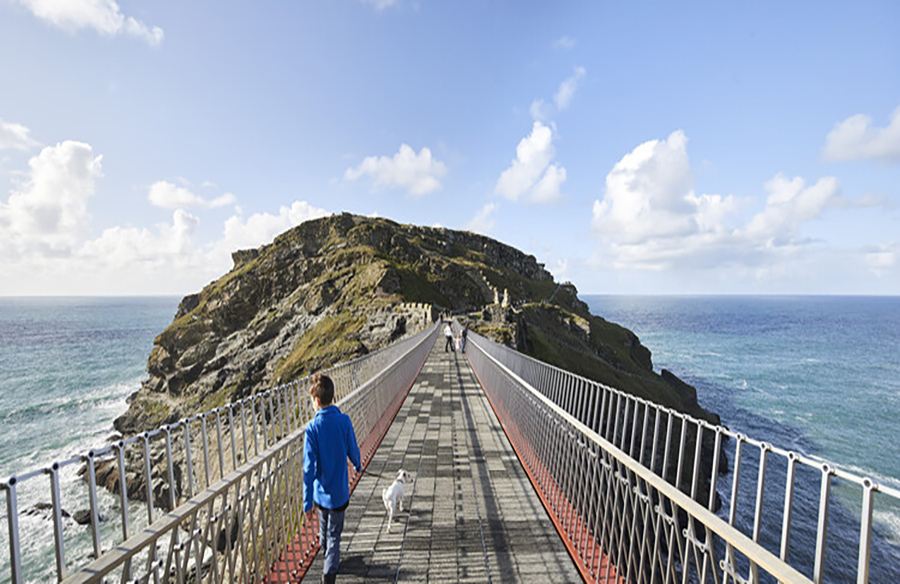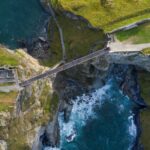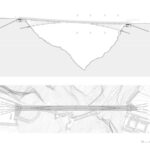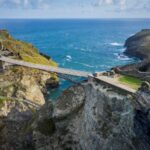Introduction
The Tintagel Castle Footbridge, a remarkable feat of engineering and design, spans a 190-foot gorge, reconnecting the mainland to the jagged headland of Tintagel Island. Ney & Partners collaborated with William Matthews Associates to create this iconic structure, following the path of the original medieval route that once linked the 13th-century gatehouse to the island courtyard.

Historical Significance
The bridge’s significance is deeply rooted in history, as it retraces the footsteps of ancient legends. The original land-bridge, lost to erosion centuries ago, inspired the name “Din Tagell,” meaning “the Fortress of the Narrow Entrance.” According to medieval lore, this narrow passage played a pivotal role in the Arthurian legend, serving as the clandestine route for Uther Pendragon’s rendezvous with Ygerna, the Duke’s wife, leading to the birth of King Arthur.
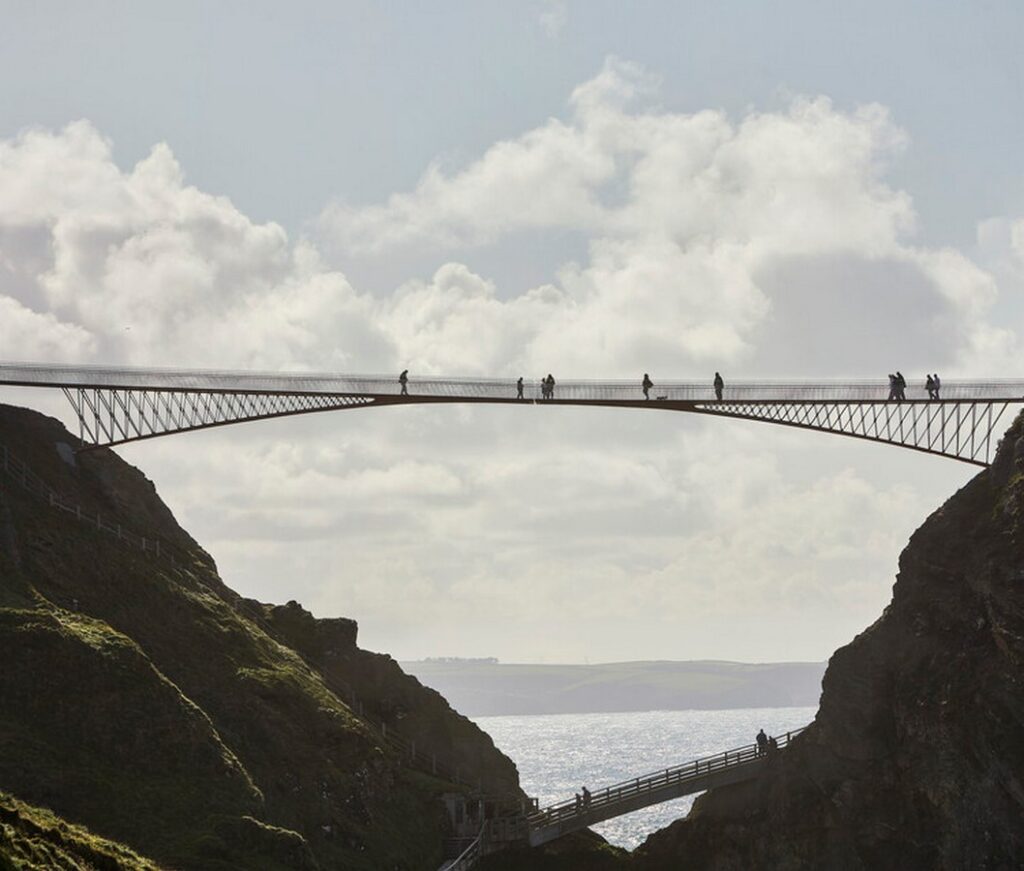
Architectural Marvel
English Heritage undertook the restoration of this historic crossing, replacing natural elements with a modern footbridge crafted from steel, local Cornish slate, and oak. The bridge comprises two independent cantilevers, each approximately 30 meters long, extending from either side to create a near-touching connection in the middle. At the heart of the bridge lies a narrow gap, symbolizing the transition between past and present, mainland and island, seamlessly blending history with modernity.
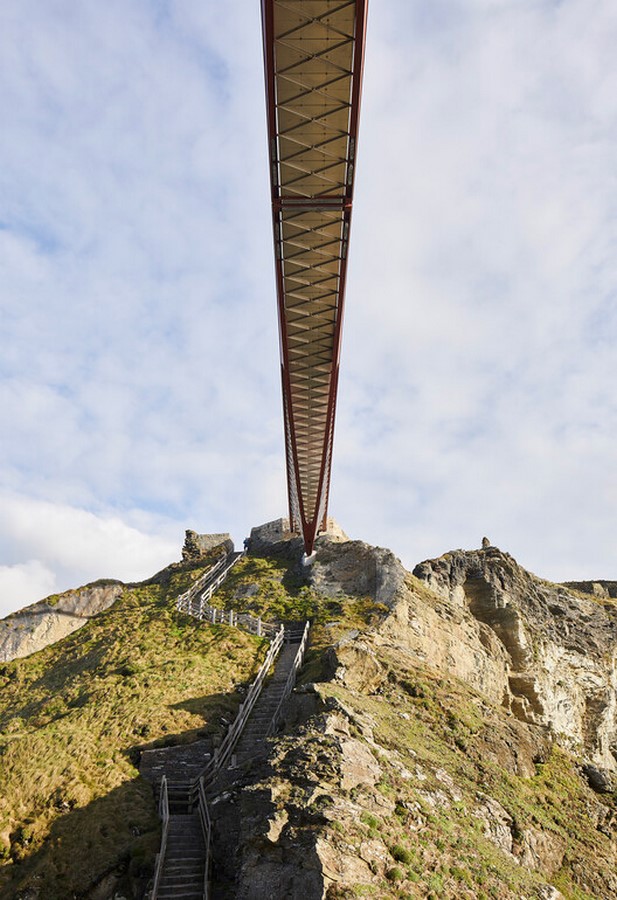
Integration and Accessibility
The new footbridge not only enhances the visitor experience but also addresses practical concerns. Welcoming nearly 250,000 visitors annually, Tintagel Castle often faced congestion issues, especially during peak periods. The footbridge provides a step-free route onto the island, promoting accessibility and reducing congestion, thus enabling more people to explore the castle’s rich heritage.

Conservation Efforts
The footbridge is part of a comprehensive £5 million program by English Heritage aimed at preserving and enhancing the site. This initiative includes improving footpaths, minimizing the impact of visitors on the castle’s archaeological and ecological integrity, and ensuring the sustainable enjoyment of this historic landmark for generations to come.
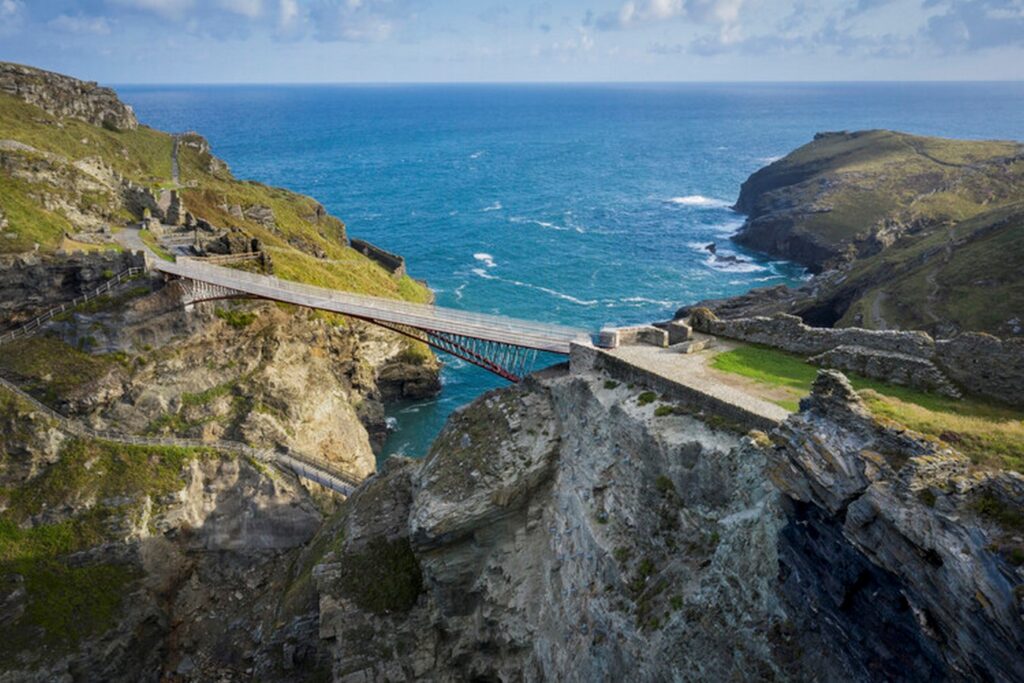
Conclusion
The Tintagel Castle Footbridge stands not only as a testament to modern engineering prowess but also as a tribute to ancient legends and historical narratives. By seamlessly blending past and present, tradition and innovation, the footbridge not only restores access to Tintagel Island but also preserves its rich heritage for future generations to explore and cherish.


